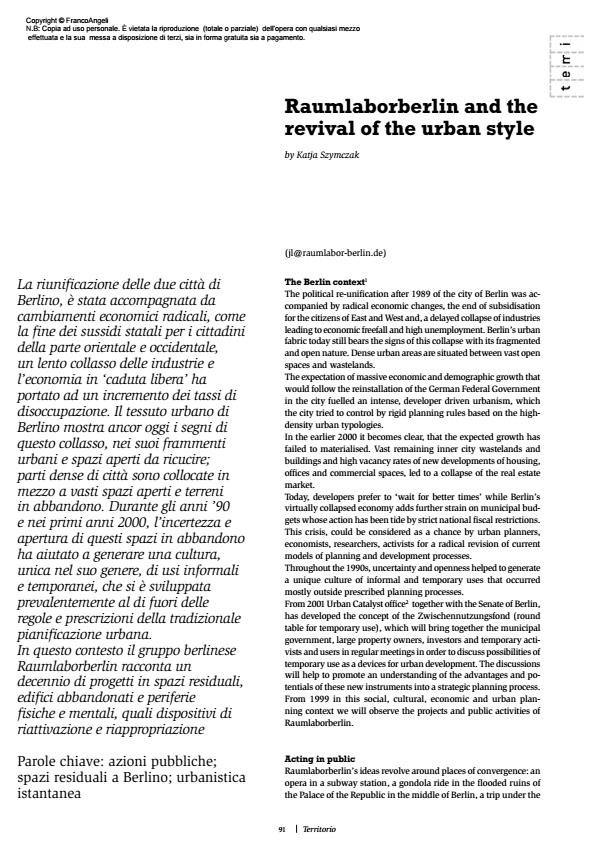Raumlaborberlin and the revival of the urban style
Journal title TERRITORIO
Author/s Katia Szymcazak
Publishing Year 2011 Issue 2011/56
Language English Pages 4 P. 91-94 File size 585 KB
DOI 10.3280/TR2011-056014
DOI is like a bar code for intellectual property: to have more infomation
click here
Below, you can see the article first page
If you want to buy this article in PDF format, you can do it, following the instructions to buy download credits

FrancoAngeli is member of Publishers International Linking Association, Inc (PILA), a not-for-profit association which run the CrossRef service enabling links to and from online scholarly content.
The reunification of the two cities of Berlin was accompanied by radical economic changes, such as the end of state subsidies for citizens in the eastern and western parts and a slow collapse of industry and an economy in free fall led to an increase in unemployment rates. The urban fabric of Berlin still shows the signs of this collapse today, with its urban fabrics and open spaces which need to be joined together. Densely urbanised parts of the city are located in the middle of huge open spaces and tracts of abandoned land. The uncertainty and openness of these abandoned spaces helped to generate a culture during the 1990s and the early 2000s, unique of its kind, of informal and temporary uses, which has developed mainly outside the rules and norms of conventional urban planning. In this context the Berlin group Raumlaborberlin recounts the history of a decade of projects in residual spaces, abandoned buildings and on the physical and mental margins, as methods for reuse and re-appropriation.
Keywords: Public actions; residual spaces in Berlin; instant urban planning
Katia Szymcazak, Raumlaborberlin and the revival of the urban style in "TERRITORIO" 56/2011, pp 91-94, DOI: 10.3280/TR2011-056014